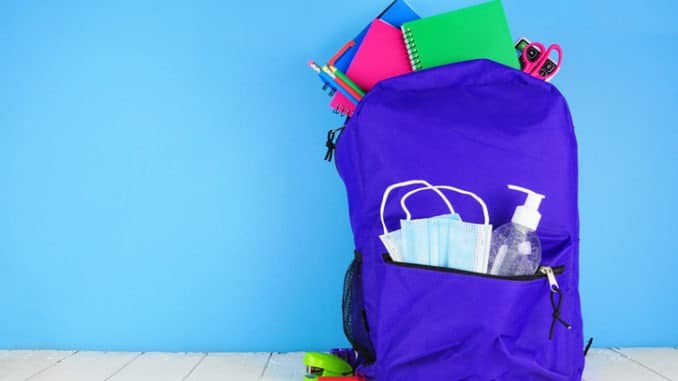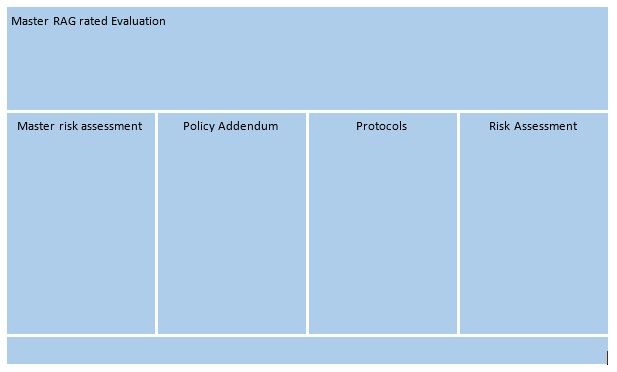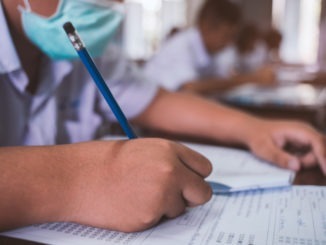
Sue Birchall, business manager at The Malling School, discusses life in the ‘new normal’ and how she is implementing health and safety measures in her school
After this prolonged period of isolation for some, and a changed way of working for others, the time has come to ‘get back to normal’. Yes, a new kind of normal but, in many ways, a fair imitation of what we had before.
If, like myself and my team, you have been horrendously busy writing risk assessments and keeping up-to-date with the many updates published by the DfE (as well as doing your day job), it may feel like normality is about to resume. As wonderful as that would be, all that time spent getting ready for the return does not mean that our job is done.
So what has been done so far?
Since the end of March we have been in receipt of a constant stream of advice, directives and initiatives – not all immediately successful; the Edenred free school meals scheme, for example. Many of us sat at our computers for hours trying to log on and order vouchers for our families only to end up looking for, and using, an alternative.
The task of keeping on top of the daily (and sometimes even more often than that) advice being published by the DfE has been a mammoth task. I am sure I am not the only one who has, many times, felt overwhelmed and at a loss as to how I was going to turn it all into a sensible and workable process.
But I persevered and created a plan which contained several aspects satisfying the directives, taking into account the health and safety concerns and designed to ensure, as far as possible, the safety and wellbeing of our staff and students. This initial plan was up-and-running for the directed opening of school in June and proved to be a workable model, ripe to be adapted for our return later in the year.
With all of this under our belt, the next hurdle is the return to work in September. This presents many other issues which no amount of directives can help with. There are some key considerations to take into account in relation to the return, and I have endeavoured to work my way through these with my team.
Paperwork
From the outset, it has been important to try to create paperwork that provides advice and direction but that is also usable and useful. One of the most important things that we have been doing in my school is sharing all of this with our staff so that they understand that they are part of the process. Health and safety is the responsibility of all of us and, whilst we are doing what we can to keep our staff and students safe, they have a role to play in this.
Providing checklists for the staff to complete for many of the activities and areas that they will use during their day helps them to engage with the process. It also gives the procedure a dynamic feel; on receipt of a concern we can make a decision about what, if anything, it is possible to change to address the situation.
These documents are shared through online training, via our school virtual community, and in some cases through personal meetings and risk assessments.
Our version of this has been very simple as shown in the Venn diagram below.

The key document is the rag rated master document which measures how the school is meeting its targets in ensuring that it is compliant. This is fed into by a master risk assessment which identifies the risks and what processes have been put in place to mitigate them. This is fed by a set of risk assessments, protocols and policy addendums, all of which are workable documents which are constantly revisited and amended where necessary.
This, I feel, will be an ongoing process.
Staff
Keeping in contact with all of our staff has proven at times to be quite difficult. Our increased use of ICT has helped with this as ongoing Teams/Zoom meetings have meant that line managers have been able to ‘stay in touch’ and help our colleagues cope with the demands of working from home. This has not always been successful for all of our staff and we have relied quite heavily on line managers to keep in contact with their teams.
The use of staff surveys has helped my team identify those most at risk, or with increased anxiety, and put in place a regime of personal risk assessments and ‘keep in touch’ meetings. Whilst this has taken quite some to do, it has proven invaluable for informing the creation of our processes and, hopefully, reassured staff along the way that we are working to ensure that our schools are as safe as they can be.
Students
Some students have already been back in school; the numbers will, of course, vary depending on your school cohort and situation so we have been able to have a dummy run of some of what we have put in place. Many others will have engaged with on-line ‘live’ and recorded lessons to continue their education.
The process of planning for getting all our students back into school in ‘bubbles’ has perhaps provided the biggest headache of all. As a secondary, it has proven near impossible to put students in year group bubbles in KS4, due to options and the need to move to different subjects. KS3, is not such an issue.
However, a version of this is now in place and our student bubbles will be visited by peripatetic teachers in an effort to move them around the school as little as possible, all observing a strict one way or keep to the right system. School times, lunch and break times are all staggered. We are now awash with sanitiser, posters, tissues and soap with individual student and teacher packs to stop the sharing of resources. Phew!
So, we are now looking forward to September with, perhaps, baited breath, hoping that we can achieve this new normality without any further interruption. None of us are under any illusions that we have finished with our planning – this is, without doubt, ongoing, with the end not yet in sight.
But there is opportunity in all of this upheaval, and maybe some of our new ways of working will prove to be more efficient and will become normal practice, part of our new reality.




Be the first to comment